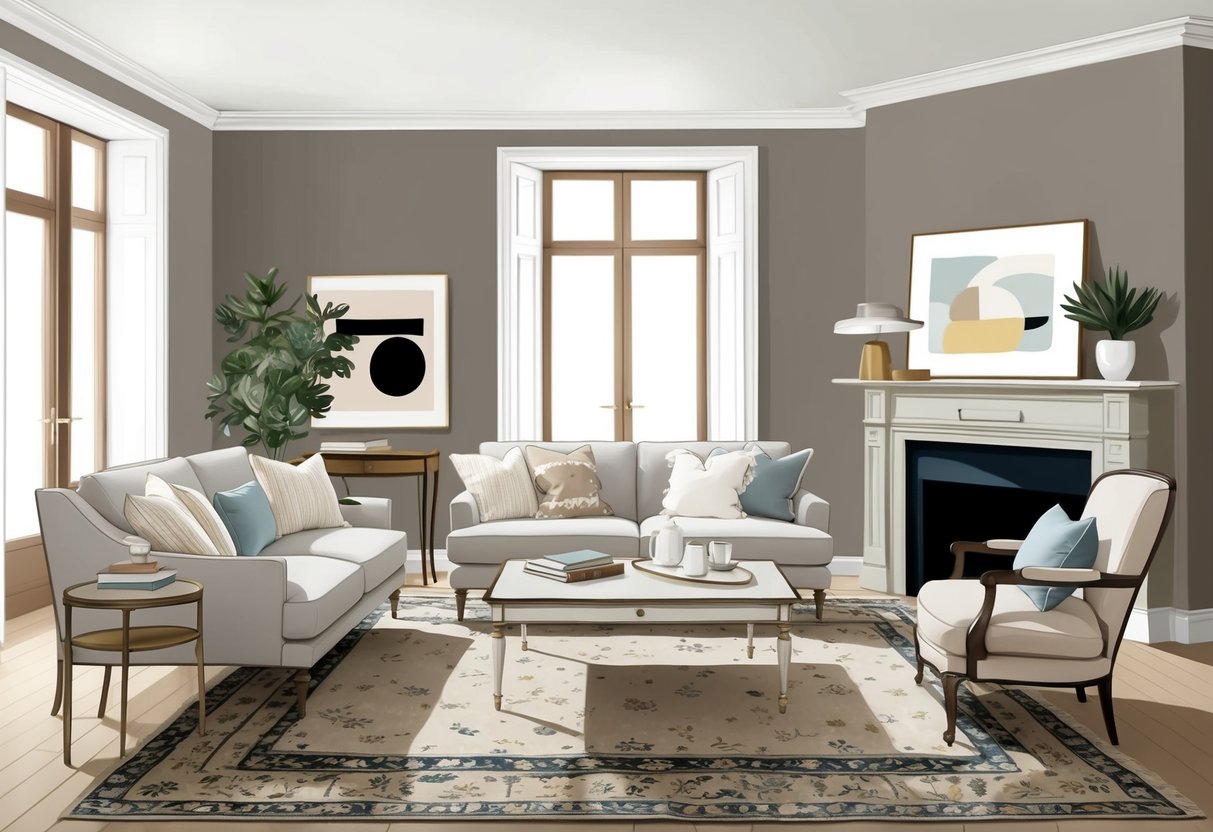
Blending modern decor with traditional style is a rewarding way to create a balanced, timeless home that feels both current and inviting.
The key to achieving harmony between modern and traditional elements lies in the thoughtful use of neutral color palettes, clean lines, and a mix of textures that allow each style to shine without clashing.
With the right approach, anyone can combine classic furniture pieces and contemporary details for a cohesive and sophisticated look.
Homeowners and interior design enthusiasts often worry that mixing different decor styles will make their space feel chaotic or mismatched.
With proper planning, it is possible to strike the perfect balance.
By integrating classic elements with sleek accents, they can introduce warmth and character while still keeping a fresh, uncluttered atmosphere.
A well-blended room reflects personality and never looks dated.
Understanding how to successfully combine vintage furnishings, modern lighting, and curated accessories ensures that each room tells a unique story.
Those who want inspiration or practical ideas for this timeless design strategy can find step-by-step tips and visual examples from guides on mixing interior design styles, such as this resource on modern and traditional style blending.
Understanding Modern and Traditional Decor Styles
Modern and traditional decor styles each have unique characteristics that influence a home’s overall feel and function.
Knowing the differences between these interior design approaches helps homeowners make informed, cohesive style choices for every room.
Defining Modern Design
Modern design is rooted in the early-to-mid 20th century and focuses on clean lines, open spaces, and simplicity.
This decorating style often features neutral color palettes—such as whites, grays, and beiges—and avoids ornate detailing.
Materials like glass, metal, and natural wood are commonly used for sleek finishes.
Furniture in modern interiors typically has low profiles with straight or gently curved edges.
Large windows, uncluttered surfaces, and minimal accessories keep the space feeling airy and functional.
Artwork is usually bold but limited in number, allowing each piece to stand out.
Modern design values functionality and organization.
The look is often described as “less is more,” emphasizing the beauty of shapes and forms rather than embellishment.
Spaces may include modular furniture and smart storage solutions, complementing the desire for practicality in everyday living.
Core Elements of Traditional Design
Traditional interior design is inspired by European decor from the 18th and 19th centuries, highlighting symmetry, order, and comfort.
This design style uses rich color palettes, including deep reds, greens, golds, and navy.
Fabrics such as velvet, silk, and damask add softness and formality, often displayed in drapes and upholstery.
Furniture tends to be ornate, featuring carved wood, curved legs, and intricate details.
Rooms are arranged symmetrically to promote balance and proportion.
Decorative moldings, wainscoting, and layered lighting fixtures—like chandeliers and table lamps—are frequently found in these spaces.
Accessories play a significant role, with items such as vases, framed artwork, and area rugs adding personal touches.
Traditional decor often blends various patterns and textures, creating a layered, inviting environment.
For more on traditional layouts, see this guide to traditional style rooms and their key features.
Setting the Foundation: Color Palette and Neutral Base
A balanced home design starts with thoughtful choices in color.
Using neutrals as a foundation helps modern and traditional styles blend smoothly and creates a timeless, adaptable backdrop.
Choosing the Right Color Palette
Selecting the best color palette begins with understanding how colors can influence mood and coherence.
A classic neutral palette—featuring shades like beige, cream, white, taupe, and soft gray—offers a clean slate that suits both modern minimalism and traditional warmth.
Soft, understated hues allow both contemporary furniture and ornate trim or moldings to stand out without clashing.
For added depth and interest, subtle accent colors such as muted blues, greens, or even gentle blush tones can be layered in accessories, rugs, or artwork.
Rather than overwhelming the space, these shades provide contrast and highlight textural differences between old and new elements.
Homeowners can focus on a cohesive look by consistently using a restful color scheme across larger surfaces and layering in controlled pops of color for variety.
When mixing styles, keeping to a consistent neutral color palette ensures each piece, whether vintage or sleek, works harmoniously in the room.
This method prevents visual chaos and supports a seamless transition between modern and traditional pieces, as suggested in guides on mixing vintage and modern decor.
Creating a Neutral Base for Versatility
A well-chosen neutral base acts as the canvas for layered styles and evolving trends.
Neutral flooring, wall colors, and large furniture items give flexibility to update accent items over time without major renovations.
Avoiding strong, trendy colors on main surfaces keeps spaces feeling open, cohesive, and timeless.
Using a blend of textures within neutrals—such as a linen sofa, wool rug, or matte wall paint—adds subtle visual interest and prevents monotony.
Texture variation can highlight architectural details like crown molding or sleek metal fixtures while keeping the focus on the room’s structure and design.
A strategically placed neutral area rug or set of curtains can also anchor both modern and antique pieces, tying the entire space together.
This adaptable approach makes it easy to refresh the decor with new accents, ensuring the home remains balanced and welcoming year after year.
Experts also emphasize the importance of a neutral foundation when mixing design styles for a collected, intentional look.